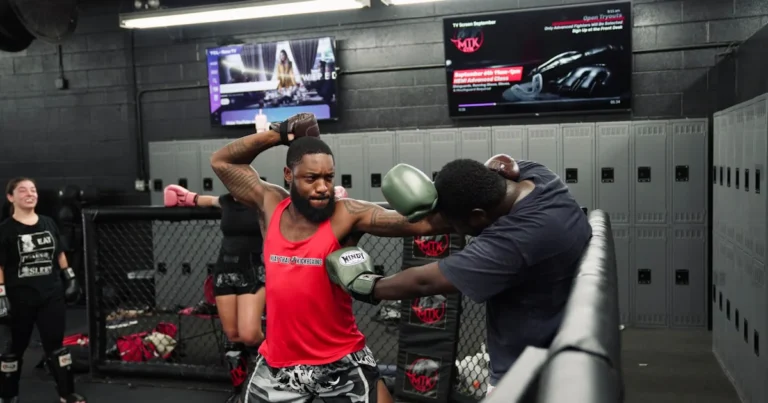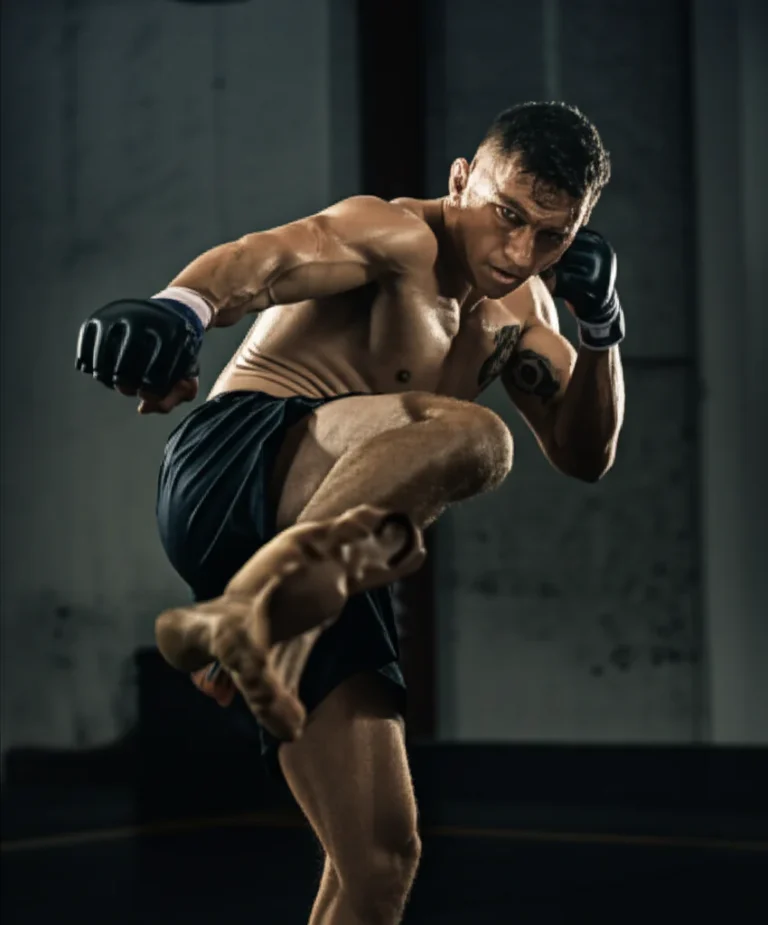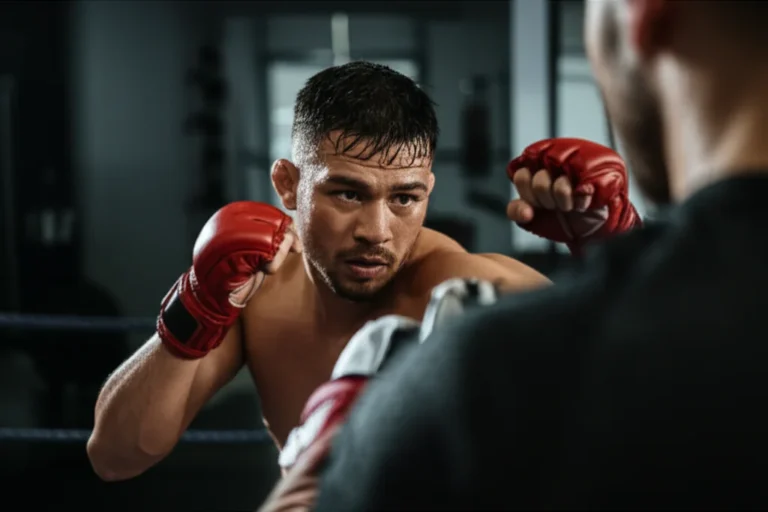Support our educational content for free when you purchase through links on our site. Learn more
MMA vs Other Martial Arts: 12 Epic Styles Compared in 2025 🥋🔥
Ever wondered how MMA really stacks up against traditional martial arts like Karate, Judo, or Taekwondo? Picture this: a fighter stepping into the cage, blending the lightning-fast strikes of Muay Thai with the ground mastery of Brazilian Jiu-Jitsu, all while dodging a wrestler’s takedown. That’s MMA — the ultimate hybrid combat sport that’s reshaping martial arts worldwide. But is it truly superior, or do classic disciplines still hold hidden gems that MMA can’t match?
In this comprehensive guide, we break down 12 major martial arts, comparing their strengths, weaknesses, rules, training styles, and cultural impact against MMA’s dynamic approach. From the cage to the dojo, we’ll uncover what makes each style unique and which one might be the perfect fit for you. Plus, we’ll bust myths, explore women’s roles, and share insider tips from the MMA Ninja™ team. Ready to settle the debate once and for all? Let’s dive in!
Key Takeaways
- MMA is the most versatile and realistic combat sport, combining striking, grappling, and submissions from multiple disciplines.
- Traditional martial arts excel in philosophy, discipline, and specialized techniques, often emphasizing self-development over competition.
- Safety and rules differ significantly, with MMA allowing full-contact fighting under regulated conditions, while many traditional arts use point sparring or controlled contact.
- Women’s MMA is rapidly growing, breaking barriers and inspiring new generations of fighters.
- Cross-training and adaptability are crucial for success in MMA, blending arts like wrestling, BJJ, Muay Thai, and boxing.
- Injury risks are higher in MMA, but proper training and protective gear mitigate dangers.
- Legal status and business models vary globally, with MMA organizations focusing on entertainment and traditional federations on cultural preservation.
Shop MMA Essentials and Gear
- Hayabusa MMA Gloves: Amazon | Hayabusa Official
- Venum Fight Shorts: Amazon | Venum Official
- UFC Official Gear: Amazon | UFC Store
Ready to train like a pro? Check out our MMA Coaching section for expert tips and workout plans!
Table of Contents
- Quick Tips and Facts About MMA vs Other Martial Arts 🥋⚔️
- The Evolution of Combat: MMA’s Rise Compared to Traditional Martial Arts 📜🔥
- Top 12 Martial Arts Compared to MMA: Strengths, Weaknesses & Styles Explained 🥊🤼♂️
- MMA’s Rulebook vs. Traditional Martial Arts Regulations: What Sets Them Apart? 📏⚖️
- Inside the Cage: Common MMA Disciplines and How They Stack Up Against Other Arts 🥋🔍
- Winning Strategies: How MMA Tactics Differ From Other Martial Arts Approaches 🎯🧠
- Women in MMA vs. Traditional Martial Arts: Breaking Barriers and Making History 👊♀️
- Amateur MMA vs. Other Martial Arts Competitions: What You Need to Know 🥇🤼♀️
- Safety First: Injury Risks and Protective Measures in MMA Compared to Other Martial Arts 🛡️💥
- Legal Landscape: The Legality of MMA and Other Martial Arts Around the Globe 🌍⚖️
- The Business of Fighting: Major MMA Organizations vs. Traditional Martial Arts Federations 💼🥋
- Training Regimens: How MMA Conditioning Compares to Other Martial Arts Workouts 💪🔥
- Cultural Impact: MMA’s Influence on Martial Arts and Pop Culture 🌐🎬
- Myths and Misconceptions: Debunking Common Beliefs About MMA and Other Martial Arts 🧐❌
- Notes and Insider Tips From MMA Ninja™ Experts 🥷💡
- Conclusion: Which Martial Art Reigns Supreme? Our Final Thoughts 🏆🤔
- Recommended Links for Deep Diving Into MMA and Martial Arts 🌐📚
- FAQ: Your Burning Questions About MMA vs Other Martial Arts Answered 🔥❓
- Reference Links and Credible Sources for MMA and Martial Arts Research 📑🔗
Quick Tips and Facts About MMA vs Other Martial Arts 🥋⚔️
Welcome to the ultimate showdown of combat styles! Whether you’re a curious newbie or a seasoned fighter, understanding how MMA stacks up against other martial arts is like unlocking a secret level in the game of fighting. At MMA Ninja™, we’ve trained, sparred, and analyzed the nuances to bring you the essentials.
Quick Facts You Need to Know
- MMA is the ultimate hybrid: It blends striking, grappling, and submissions from arts like Brazilian Jiu-Jitsu, wrestling, Muay Thai, and boxing.
- Traditional martial arts often specialize: Karate, Taekwondo, Aikido, and Judo focus on specific techniques or philosophies.
- MMA rules prioritize safety but allow more freedom: Unlike many traditional arts, MMA permits ground-and-pound strikes, submissions, and clinch fighting under a unified rule set.
- MMA fighters cross-train extensively: Most top fighters have backgrounds in multiple disciplines, making them versatile and adaptable.
- Injury rates are higher in MMA: Due to full-contact and fewer restrictions, injuries like concussions and fractures are more common.
- Women’s MMA is booming: Female fighters like Amanda Nunes and Valentina Shevchenko have shattered stereotypes and elevated the sport globally.
Why Should You Care?
Because knowing the strengths and weaknesses of each style can help you choose the best martial art for your goals — whether it’s self-defense, fitness, competition, or personal growth. Curious about how MMA’s “no holds barred” approach compares to the elegance of Aikido or the discipline of Karate? Stick around — we’re just getting warmed up!
For a deep dive into the roots and philosophy of mixed martial arts, check out our Mixed Martial Arts guide.
The Evolution of Combat: MMA’s Rise Compared to Traditional Martial Arts 📜🔥
MMA didn’t just appear out of nowhere — it’s the culmination of centuries of combat evolution, blending the best techniques from around the world into one dynamic sport.
Ancient Roots and Early Cross-Styles
- Pankration (Ancient Greece): A brutal mix of striking and grappling, considered one of the earliest MMA forms.
- Leitai (Ancient China): Combined boxing and wrestling, showing early experimentation with mixed styles.
- Vale Tudo (Brazil): The “anything goes” fights of Brazil in the 20th century laid the groundwork for modern MMA.
The Modern MMA Explosion
- UFC’s birth in 1993: The Ultimate Fighting Championship was designed to test which martial art was the most effective in real combat.
- Gracie Jiu-Jitsu dominance: Royce Gracie’s early UFC wins proved the power of ground fighting and submissions.
- Rule evolution: To protect fighters, rules were introduced — weight classes, rounds, gloves, and banned moves.
- Global growth: From Japan’s Pride to Bellator and ONE Championship, MMA became a worldwide phenomenon.
Traditional Martial Arts: Preservation and Adaptation
- Many traditional arts like Karate, Taekwondo, and Judo have adapted by incorporating MMA-style training or creating competitive formats.
- Others maintain a strong focus on philosophy, discipline, and self-defense, sometimes shunning full-contact competition.
Want to explore MMA’s rich history? Our MMA History category has you covered with stories, timelines, and legendary fights.
Top 12 Martial Arts Compared to MMA: Strengths, Weaknesses & Styles Explained 🥊🤼♂️
Let’s break down the biggest players in the martial arts world and see how they measure up against MMA’s all-around approach.
| Martial Art | Focus Area | Strengths | Weaknesses vs MMA | Notable MMA Fighters Using It |
|---|---|---|---|---|
| Brazilian Jiu-Jitsu (BJJ) | Ground grappling, submissions | Mastery of chokes, joint locks, ground control | Limited striking skills alone | Royce Gracie, Demian Maia, Charles Oliveira |
| Wrestling | Takedowns, control | Dominant clinch and takedown ability | Less emphasis on submissions or striking | Khabib Nurmagomedov, Daniel Cormier |
| Muay Thai | Striking, clinch | Powerful kicks, elbows, knees, clinch work | Vulnerable on the ground without grappling | Anderson Silva, Joanna Jędrzejczyk |
| Boxing | Punching, footwork | Superior hand speed, combinations, defense | Limited kicks and grappling | Conor McGregor, Dustin Poirier |
| Judo | Throws, takedowns | Explosive throws, submissions | Less striking focus | Ronda Rousey, Khabib Nurmagomedov |
| Karate | Striking, discipline | Speed, precision, traditional forms | Often less practical in full-contact MMA | Lyoto Machida, Georges St-Pierre |
| Taekwondo | Kicking techniques | Dynamic kicks, agility | Less grappling and hand striking | Anthony Pettis, Valentina Shevchenko |
| Aikido | Joint locks, redirection | Philosophy of non-violence, flow | Limited competitive application | Rare in MMA |
| Sambo | Grappling, submissions | Combines judo and wrestling techniques | Less striking emphasis | Fedor Emelianenko, Oleg Taktarov |
| Capoeira | Dance-like striking | Unpredictable movements, kicks | Less practical in cage fighting | Anderson Silva (influenced) |
| Sanda (Chinese Kickboxing) | Striking, throws | Powerful strikes with throws and sweeps | Less ground fighting focus | Cung Le, Zhang Weili |
| Luta Livre | Grappling, submissions | Striking plus submission grappling | Less popular globally | Marco Ruas, José Aldo |
What MMA Does Differently
- Cross-training: MMA fighters don’t rely on just one style; they blend multiple arts to cover all ranges of combat.
- Realism: MMA training emphasizes live sparring and adaptability over fixed kata or forms.
- Competition: The cage environment and rules force fighters to be well-rounded and strategic.
Curious about how these arts influence MMA? Dive into our Fighter Profiles to see real examples.
MMA’s Rulebook vs. Traditional Martial Arts Regulations: What Sets Them Apart? 📏⚖️
Rules shape the way martial arts are practiced and perceived. Let’s compare MMA’s unified rules with traditional martial arts’ often more restrictive or symbolic regulations.
MMA Unified Rules Highlights
- Rounds: Typically 3 rounds of 5 minutes; championship fights have 5 rounds.
- Allowed techniques: Strikes (punches, kicks, elbows, knees), takedowns, submissions.
- Forbidden moves: Eye gouging, biting, strikes to the back of the head, groin attacks, small joint manipulation.
- Protective gear: Open-fingered gloves, mouthguards, groin protectors.
- Weight classes: Flyweight to heavyweight divisions ensure fair matchups.
Traditional Martial Arts Rules
- Point-based scoring: Many arts like Karate and Taekwondo award points for clean, controlled strikes rather than damage.
- Limited contact: Some styles prohibit full-power strikes or ground fighting (e.g., Aikido, traditional Karate).
- Uniforms and belts: Emphasis on rank and etiquette, often with strict dress codes.
- No live sparring or limited sparring: Many traditional dojos focus on forms (kata) and controlled drills.
What This Means for You
- MMA’s rules encourage realism and effectiveness in a controlled environment.
- Traditional arts often emphasize discipline, respect, and self-development alongside combat skills.
- If you want to test your skills in a live fight, MMA’s ruleset is the closest to “real combat.”
For a detailed look at MMA’s rules evolution, visit our MMA History section.
Inside the Cage: Common MMA Disciplines and How They Stack Up Against Other Arts 🥋🔍
MMA is a melting pot of disciplines. Here’s a closer look at the core arts that form the backbone of MMA training — and how they compare to their traditional counterparts.
Brazilian Jiu-Jitsu (BJJ)
- Focus: Ground control, submissions (chokes, armbars).
- Benefit: Allows smaller fighters to neutralize bigger opponents.
- Drawback: Limited striking skills if trained alone.
- Traditional vs MMA: BJJ in MMA is adapted for strikes and cage control, unlike traditional BJJ tournaments that forbid strikes.
Wrestling
- Focus: Takedowns, positional control, and defense.
- Benefit: Dictates where the fight takes place.
- Drawback: Less submission knowledge traditionally.
- Traditional vs MMA: Wrestlers learn submissions and striking to survive MMA’s diverse threats.
Muay Thai
- Focus: Striking with fists, elbows, knees, and shins; clinch fighting.
- Benefit: Devastating stand-up arsenal.
- Drawback: Vulnerable on the ground if untrained.
- Traditional vs MMA: MMA fighters modify Muay Thai to defend takedowns and fight off their back.
Boxing
- Focus: Punching, footwork, head movement.
- Benefit: Superior hand speed and combinations.
- Drawback: No kicks or grappling.
- Traditional vs MMA: MMA boxers adjust stance to defend takedowns and integrate kicks.
Judo
- Focus: Throws, trips, and submissions.
- Benefit: Powerful takedown skills.
- Drawback: Limited striking.
- Traditional vs MMA: MMA judokas adapt to avoid being grounded and learn striking.
Other Arts (Karate, Taekwondo, Sambo, Aikido)
- Each contributes unique techniques or philosophies but often requires adaptation for MMA’s full-contact environment.
Why Cross-Training Matters
No single art covers all combat ranges. MMA fighters train in multiple disciplines to build a complete skill set — striking, clinch, takedown, and ground fighting.
Want to see how these arts blend in real fights? Check our Fighter Profiles for breakdowns of champions’ styles.
Winning Strategies: How MMA Tactics Differ From Other Martial Arts Approaches 🎯🧠
MMA is as much a mental chess game as it is physical combat. The strategies fighters use often differ significantly from traditional martial arts approaches.
MMA Strategy Essentials
- Adaptability: Fighters must switch between striking, clinching, and grappling seamlessly.
- Pace control: Managing energy across rounds is critical.
- Fight IQ: Reading opponents’ tendencies and exploiting weaknesses.
- Ground-and-pound: Taking opponents down and striking from top position.
- Submission hunting: Constantly seeking chokes or joint locks to finish fights.
Traditional Martial Arts Strategy
- Form and discipline: Emphasis on perfecting techniques and forms (kata).
- Point scoring: Many arts focus on scoring points rather than finishing fights.
- Self-defense mindset: Avoiding conflict or neutralizing threats quickly.
- Philosophical approach: Mental and spiritual growth often prioritized over competition.
How MMA Strategy Wins in the Cage
MMA fighters combine offense and defense dynamically — striking to set up takedowns, defending submissions, and exploiting openings in real-time. This contrasts with many traditional arts where techniques are practiced in isolation or controlled settings.
For tactical insights, explore our MMA Coaching articles.
Women in MMA vs. Traditional Martial Arts: Breaking Barriers and Making History 👊♀️
Women’s participation in combat sports has exploded, and MMA has been a major catalyst for change.
Women in MMA
- Trailblazers: Ronda Rousey’s UFC dominance shattered glass ceilings.
- Diverse backgrounds: Female fighters come from BJJ, wrestling, Muay Thai, boxing, and more.
- Promotions: UFC, Bellator, Invicta FC, and ONE Championship showcase female talent.
- Impact: Women’s MMA is now a major draw with dedicated fan bases and pay-per-view events.
Women in Traditional Martial Arts
- Long history: Women have practiced Karate, Taekwondo, Judo, and Aikido for decades.
- Focus: Often on self-defense, discipline, and fitness rather than competition.
- Challenges: Some traditional dojos have been slow to embrace female fighters or competition.
MMA’s Influence on Female Martial Artists
MMA’s visibility and success have inspired many women to pursue martial arts seriously, blending traditional techniques with modern training. It’s a powerful movement toward equality and empowerment.
For inspiring stories, check our Fighter Profiles featuring top female fighters.
Amateur MMA vs. Other Martial Arts Competitions: What You Need to Know 🥇🤼♀️
Thinking about stepping into the ring or cage? Here’s how amateur MMA compares to traditional martial arts competitions.
Amateur MMA
- Protective gear: Headgear, shin guards, gloves, and mouthguards mandatory.
- Rules: Modified from pro MMA to enhance safety (shorter rounds, limited strikes).
- Organizations: IMMAF, WMMAA, and GAMMA govern amateur MMA globally.
- Experience: Provides realistic fight experience with safety nets.
Traditional Martial Arts Competitions
- Point sparring: Focus on scoring clean techniques with controlled contact.
- Forms/kata: Judged for precision and technique rather than combat.
- Full-contact tournaments: Some arts like Muay Thai and Karate have full-contact bouts but often with more protective gear.
Which Is Right for You?
- If you want realistic fight experience, amateur MMA is the closest simulation.
- If you prefer technical mastery and tradition, traditional competitions offer a different challenge.
Learn more about training for competition in our MMA Coaching section.
Safety First: Injury Risks and Protective Measures in MMA Compared to Other Martial Arts 🛡️💥
Safety is a hot topic in combat sports. Let’s get real about injury risks and how MMA compares to other martial arts.
Injury Rates & Types
| Sport/Art | Injury Rate (per 1000 athlete exposures) | Common Injuries |
|---|---|---|
| MMA | ~228.7 | Lacerations, fractures, concussions |
| Boxing | ~200 | Concussions, hand fractures |
| Muay Thai | ~150 | Cuts, bruises, fractures |
| Brazilian Jiu-Jitsu | ~50 | Sprains, joint injuries |
| Karate (point sparring) | ~30 | Minor bruises, strains |
| Aikido | Low | Joint strains, falls |
Protective Measures in MMA
- Mandatory gloves and mouthguards reduce cuts and dental injuries.
- Referee stoppages prevent prolonged damage.
- Pre-fight medicals and post-fight checks ensure fighter health.
- Weight classes minimize mismatches.
Traditional Martial Arts Safety
- Often emphasize controlled contact or point sparring to reduce injury.
- Use of headgear and padding in many tournaments.
- Training often includes falling techniques (ukemi) to prevent injury.
What You Should Know
- MMA is inherently riskier due to full-contact and fewer restrictions.
- Proper training, conditioning, and respect for rules greatly reduce injury risk.
- Traditional arts offer safer environments but may lack real-fight experience.
For safety tips and training advice, visit our MMA Coaching articles.
Legal Landscape: The Legality of MMA and Other Martial Arts Around the Globe 🌍⚖️
MMA’s journey to legitimacy has been a rollercoaster ride, with laws and regulations varying widely.
MMA Legality
- United States: Legal and regulated in most states with athletic commissions overseeing events.
- Europe: Generally legal with strong regulation, though some countries have restrictions.
- Asia: Japan, South Korea, and the Philippines have thriving MMA scenes; China’s market is growing fast.
- Other regions: Some countries still ban or heavily restrict MMA due to safety concerns or cultural reasons.
Traditional Martial Arts
- Generally legal worldwide, often supported by cultural institutions and educational programs.
- Some traditional combat sports (e.g., bare-knuckle boxing) face legal challenges.
Why It Matters
- Legality affects your ability to train, compete, and watch MMA events.
- Regulation improves fighter safety and sport legitimacy.
Stay updated with the latest in MMA laws via our MMA Industry News.
The Business of Fighting: Major MMA Organizations vs. Traditional Martial Arts Federations 💼🥋
Behind the scenes, the business side shapes how martial arts grow and reach audiences.
Top MMA Organizations
| Organization | Headquarters | Notable Features |
|---|---|---|
| UFC | USA | Largest global MMA promotion, pay-per-view giant |
| Bellator MMA | USA | Strong roster, tournament formats |
| ONE Championship | Singapore | Asia-focused, mix of MMA and Muay Thai |
| Invicta FC | USA | Women’s MMA specialist |
| PFL (Professional Fighters League) | USA | Season format, million-dollar prizes |
Traditional Martial Arts Federations
- World Karate Federation (WKF): Olympic-recognized, governs Karate competitions.
- International Judo Federation (IJF): Oversees Judo worldwide, Olympic sport.
- World Taekwondo (WT): Governs Olympic Taekwondo.
- International Aikido Federation (IAF): Promotes Aikido globally, non-competitive.
Business Models Compared
- MMA organizations focus on entertainment, pay-per-view, and athlete promotion.
- Traditional federations emphasize education, cultural preservation, and amateur competition.
Want to know how fighters navigate this landscape? Check out our Fighter Profiles.
Training Regimens: How MMA Conditioning Compares to Other Martial Arts Workouts 💪🔥
Training for MMA is a full-body, high-intensity affair, but how does it compare to traditional martial arts workouts?
MMA Training Components
- Strength and conditioning: Weightlifting, plyometrics, cardio endurance.
- Technical drills: Striking, grappling, takedown defense.
- Sparring: Full-contact sessions to simulate fight conditions.
- Recovery: Nutrition, physiotherapy, and rest are critical.
Traditional Martial Arts Training
- Forms/kata practice: Repetitive drills for technique perfection.
- Controlled sparring: Light to moderate contact, focusing on timing and precision.
- Physical conditioning: Varies widely; some arts emphasize flexibility and balance.
- Meditation and breathing: Common in arts like Aikido and Karate for mental focus.
Which Is More Demanding?
- MMA training is generally more physically intense and varied due to the sport’s demands.
- Traditional arts may focus more on technical mastery and mental discipline.
For detailed training plans and tips, visit our MMA Coaching section.
Cultural Impact: MMA’s Influence on Martial Arts and Pop Culture 🌐🎬
MMA isn’t just a sport; it’s a cultural phenomenon reshaping how we view martial arts worldwide.
MMA’s Pop Culture Footprint
- Movies and TV: Films like Warrior and Never Back Down showcase MMA’s gritty appeal.
- Video games: Titles like EA Sports UFC bring the cage to your console.
- Celebrity fighters: Ronda Rousey and Conor McGregor crossed over into mainstream fame.
- Fitness trends: MMA-inspired workouts are popular in gyms globally.
Influence on Traditional Martial Arts
- Many traditional dojos have integrated MMA techniques to stay relevant.
- Younger generations often prefer MMA’s practical approach over classical forms.
- Some purists resist, fearing loss of tradition and philosophy.
Want to explore MMA’s philosophy and cultural roots? Check out our Mixed Martial Arts Philosophy articles.
Myths and Misconceptions: Debunking Common Beliefs About MMA and Other Martial Arts 🧐❌
Let’s bust some myths that cloud the MMA vs. traditional martial arts debate.
Myth #1: MMA is just street fighting with no discipline.
Fact: MMA fighters undergo rigorous training, discipline, and strategy development. It’s a highly technical sport.
Myth #2: Traditional martial arts don’t work in real fights.
Fact: Many traditional techniques are effective but often require adaptation and realistic training.
Myth #3: MMA is too dangerous and causes brain damage.
Fact: While injuries occur, regulated MMA has safety protocols; many traditional arts also carry risks.
Myth #4: MMA fighters lack respect and honor compared to traditional martial artists.
Fact: Respect and honor are core values in MMA gyms worldwide.
Myth #5: Aikido and other soft arts are useless in MMA.
Fact: While rare, some principles like balance and redirection can complement MMA training.
Want more myth-busting insights? Our MMA Industry News often covers these topics.
Notes and Insider Tips From MMA Ninja™ Experts 🥷💡
Here’s the inside scoop from our team of martial artists who’ve lived and breathed MMA and traditional arts.
- Cross-train smart: Don’t just dabble; master at least two core disciplines (e.g., wrestling and BJJ).
- Don’t neglect striking: Even the best grapplers need solid stand-up skills.
- Mental toughness wins fights: Train your mind as hard as your body.
- Respect all arts: Every martial art has gems; learn from each without bias.
- Safety first: Use proper gear and listen to your body to avoid burnout and injury.
Personal Story:
One of our coaches started in traditional Karate but switched to MMA after realizing the importance of ground fighting. The transition was tough but rewarding — now he blends the discipline of Karate with the pragmatism of MMA for a killer combo.
That’s a wrap on the deep dive before we crown the ultimate champion in the conclusion! Ready to see who takes the belt? Stay tuned.
Conclusion: Which Martial Art Reigns Supreme? Our Final Thoughts 🏆🤔

After this epic journey through the world of combat styles, what’s the verdict? Is MMA truly the ultimate martial art, or do traditional disciplines still hold their ground?
The MMA Edge ✅
- Versatility: MMA’s blend of striking, grappling, and submissions makes it the most well-rounded fighting system available today.
- Realism: The cage tests fighters under pressure, forcing practical, effective techniques.
- Adaptability: MMA fighters constantly evolve, incorporating the best from every style.
- Competitive success: MMA’s global popularity and professional structure offer unmatched opportunities for fighters.
Traditional Martial Arts Strengths ✅
- Philosophy and discipline: Arts like Aikido, Karate, and Taekwondo cultivate mental focus, respect, and personal growth.
- Specialized skills: Mastery of specific techniques can be profound and beautiful.
- Safety and longevity: Many traditional arts emphasize controlled training, reducing injury risk.
- Cultural heritage: Preserving centuries-old traditions and values.
The Bottom Line
If your goal is to compete in full-contact fighting or prepare for realistic self-defense, MMA’s comprehensive training and ruleset make it the superior choice. However, if you seek spiritual growth, discipline, or a lifelong practice rooted in tradition, traditional martial arts offer irreplaceable value.
At MMA Ninja™, we believe the best martial artist is one who respects all disciplines and trains smartly to suit their personal goals. Whether you’re stepping into the cage or the dojo, the journey is yours to own — and we’re here to guide you every step of the way.
Ready to gear up and start training? Let’s get you set with the best equipment and resources!
Recommended Links for Deep Diving Into MMA and Martial Arts 🌐📚
Shop MMA Gear & Training Essentials
- UFC Official Gear: Amazon | UFC Store
- Hayabusa MMA Gloves: Amazon | Hayabusa Official
- Venum Fight Shorts: Amazon | Venum Official
- Everlast Boxing Gloves: Amazon | Everlast Official
Must-Read Books on MMA and Martial Arts
- The Fighter’s Mind by Sam Sheridan — Amazon
- Mixed Martial Arts: The Book of Knowledge by B.J. Penn — Amazon
- The Way of the Fight by Georges St-Pierre — Amazon
- Aikido and the Dynamic Sphere by Adele Westbrook & Oscar Ratti — Amazon
- Brazilian Jiu-Jitsu: Theory and Technique by Renzo Gracie & Royler Gracie — Amazon
FAQ: Your Burning Questions About MMA vs Other Martial Arts Answered 🔥❓

What are the key differences between MMA and traditional martial arts like Karate and Taekwondo?
MMA is a full-contact combat sport that combines striking, clinching, and grappling, with a focus on practical effectiveness in a competitive cage environment. It allows techniques from multiple disciplines and emphasizes adaptability and real-fight scenarios.
Traditional martial arts like Karate and Taekwondo often emphasize forms (kata), discipline, and point-based sparring, with controlled contact and a strong cultural or philosophical foundation. Their training may focus more on precision, etiquette, and self-development rather than full-contact competition.
How does Brazilian Jiu-Jitsu compare to MMA in terms of technique and training?
Brazilian Jiu-Jitsu (BJJ) specializes in ground grappling and submissions, teaching fighters how to control opponents and finish fights with chokes and joint locks. BJJ training often involves live rolling (sparring) and positional drills.
In MMA, BJJ techniques are adapted to account for strikes and cage dynamics. MMA fighters cross-train to blend BJJ with striking and wrestling, making their ground game more versatile and defensively aware.
Read more about “Mixed Martial Arts vs Boxing vs MMA: 7 Key Differences Explained 🥊🥋 …”
Is MMA more effective than other martial arts for self-defense and real-world fighting?
MMA’s comprehensive training in striking, clinch, and ground fighting makes it highly effective for real-world self-defense, especially because it prepares practitioners for unpredictable, full-contact situations.
However, effectiveness depends on training quality, mindset, and situational awareness. Some traditional arts teach valuable self-defense principles, but MMA’s realistic sparring and conditioning often provide an edge in actual confrontations.
What are the advantages and disadvantages of training in MMA versus other martial arts like Judo and Wrestling?
Advantages of MMA Training:
- Well-rounded skill set covering all ranges of combat.
- Realistic sparring and fight simulation.
- Access to modern conditioning and recovery methods.
Disadvantages:
- Higher injury risk due to full-contact nature.
- Requires more time commitment to master multiple disciplines.
Advantages of Judo/Wrestling:
- Specialized mastery of throws, takedowns, and control.
- Strong foundation for MMA grappling.
- Often safer training environments.
Disadvantages:
- Limited striking skills if trained alone.
- Less exposure to striking defense and submissions.
Can experience in other martial arts be beneficial for a career in MMA, or is it better to start with MMA training from the beginning?
Experience in arts like wrestling, BJJ, Muay Thai, or boxing provides a strong foundation and can accelerate MMA skill development. Many top MMA fighters started in one discipline before cross-training.
Starting MMA training from scratch is also effective, especially with quality coaching that integrates multiple arts. The key is consistent, well-rounded training and adapting techniques to MMA rules and conditions.
How does the conditioning and physical fitness aspect of MMA differ from other martial arts and combat sports?
MMA conditioning is highly demanding, combining strength, endurance, agility, and explosive power to prepare for the diverse physical challenges of a fight.
Traditional martial arts may focus more on flexibility, balance, and technique-specific conditioning, with less emphasis on maximal cardiovascular or strength training.
MMA fighters often engage in periodized training, mixing gym work, technical drills, and sparring to peak for competition.
What are some of the most common injuries in MMA compared to other martial arts, and how can they be prevented or mitigated?
Common MMA Injuries:
- Lacerations and cuts from strikes.
- Fractures (hands, feet, nose).
- Concussions and head trauma.
- Joint sprains and ligament tears.
In Traditional Martial Arts:
- Sprains and strains from repetitive motion or falls.
- Bruises from controlled sparring.
- Overuse injuries from kata or forms practice.
Prevention Tips:
- Use proper protective gear (gloves, mouthguards, headgear in amateur bouts).
- Train under qualified coaches emphasizing technique and safety.
- Prioritize recovery, rest, and injury rehabilitation.
- Maintain good physical conditioning and flexibility.
Reference Links and Credible Sources for MMA and Martial Arts Research 📑🔗
- Mixed Martial Arts – Wikipedia — Comprehensive overview of MMA history and rules.
- International Mixed Martial Arts Federation (IMMAF) — Governing body for amateur MMA worldwide.
- Ultimate Fighting Championship (UFC) — Leading MMA promotion with fighter profiles and event info.
- Hayabusa Fight Gear — Industry-leading MMA equipment brand.
- Venum Official Website — Top MMA apparel and gear.
- Sensei Ando: TMA vs MMA Debate — In-depth discussion on traditional martial arts vs MMA.
- MMA Ninja™ Fighter Profiles — Real-life examples of martial arts blending in MMA.
- MMA Ninja™ MMA History — Explore the evolution of MMA.
- MMA Ninja™ MMA Coaching — Training tips and strategies from experts.
Ready to take your martial arts journey to the next level? Whether you choose MMA or a traditional path, remember: the best fighter is one who trains with heart, respect, and relentless curiosity. 🥷🔥





